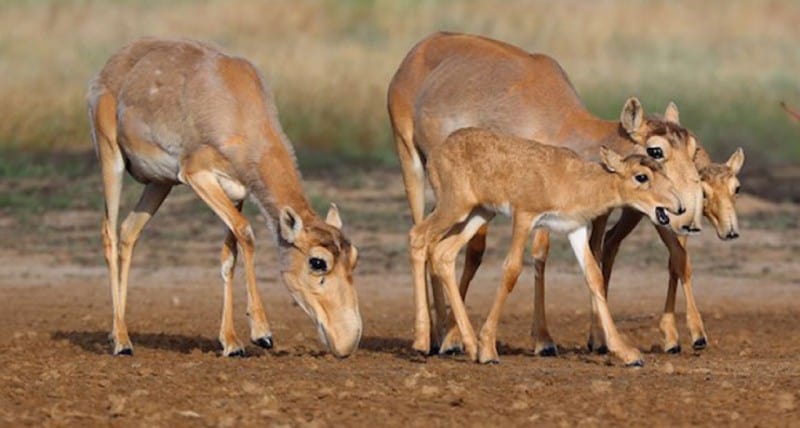Saiga Antelope Facts
- The Saiga Antelope remains the most distinctive looking species of antelope in the world. This animal evolved a proboscis quite similar to that of a walrus. Sadly, it also holds the classification of Critically Endangered, according to the IUCN.
- This magnificent animal also once inhabited an enormous portion of the Eurasian steppe. But that’s been severely reduced. Now, the entirety of its population only inhabits certain portions of the Republic of Kalmykia and Kazakhstan.
- Sadly, mankind hunted this incredible creature almost to the point of extinction in the 1920’s. Fortunately, it managed to recover somewhat. Historically, hunting of the creatures occurred extensively among local populations.
- Currently, the greatest threat to the existence of the Saiga as a species might surprise many people. This consists of a mysterious malady. But, extensive ongoing hunting of the creature for the procurement of its horn also poses a great threat to it.
- That holds true given the fact that this part of the animal is frequently used in traditional Chinese medicines. Nonetheless, like many other species, it must also now be considered to face the dual threats of habitat loss and climate change.
Related Articles
Saiga Antelope Physical Description
The most noticeable feature of the Saiga Antelope is its unique proboscis. This represents an over-sized nose structure which serves two purposes. During migrations in the summer, it serves to filter out dust, and during the winter it heats up the frigid air before it enters the lungs.
The astounding animal displays a slight degree of the physiological trait of sexual dimorphism. In its case, this presents itself with the males being larger in size than the females. The males also develop moderately large, and uniquely colored horns. Females, though, have none.
Males of the Saola reach a height at the shoulder of as much as 2.5 ft (0.8 m). In addition, these can weigh as much as 139 lb (63 kg). The antelope also mostly shows various shades of tan in color, with the exception of the belly and throat. These typically display a white or cream color.
- Kingdom: Animalia
- Phylum: Chordata
- Class: Mammalia
- Order: Artiodactyla
- Family: Bovidae
- Genus: Saiga
- Species: S. tatarica
Saiga Antelope Habitat, Behavior, and Ecology
The Saiga Antelope once inhabited a comparatively vast swathe of its part of the surface of our world. In point of fact, that range extended from the foothills of the Carpathian Mountains all the way to what now forms the beautiful country of Mongolia.
Further, within its current range, the remarkable animal inhabits a wide variety of habitat types. These include grasslands, steppes, woodlands, and even semi-deserts. This species also tends to form large herds, often numbering in the thousands.
This fascinating mammal also feeds as a herbivore. In its case, the animal mainly feeds on a variety of plants, including several species that are poisonous to other animals. It also engages in seasonal migrations that cover great distances.
Though adept at climbing, the Saiga Antelope tends to avoid extremely steep or rugged terrain. After the mating season, females actually come together in large groups to give birth. Interestingly, two-thirds of all births for this species consists of twins.
Saiga Antelope Mysterious Malady
In May of 2015, a terrible and mysterious tragedy struck the already threatened Saiga Antelope population. Within a period of only 14 days, more than 130,000 of these completely unique creatures abruptly perished. It devastated their numbers.
This number represented half of the known population of this antelope in the world. In point of fact, entire herds were extinguished in a matter of mere days. Quite unfortunately, the precise cause was never officially determined by researchers.
However, many experts suspected an extremely virulent form of pasteurellosis to be the culprit responsible for the terrible tragedy. Yet the underlying trigger of this apparent epidemic among this unique ungulate remains a complete mystery.
Species Sharing Its Range
Check out our other articles on Rare North American Flowering Plants, Galapagos Penguin, Milford Sound, Scythian Lamb, Gulper Eel, Fennec Fox, Lord Howe Island Stick Insect

